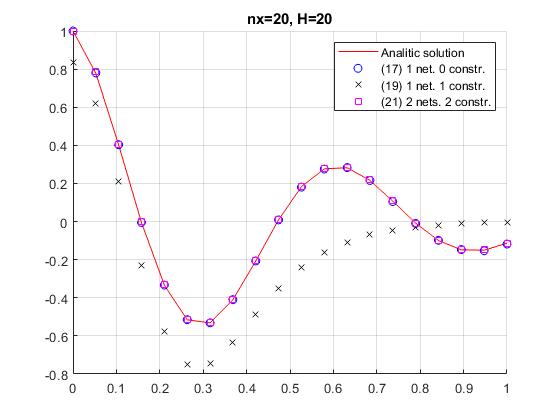Soluções Numéricas de Equações Diferenciais com Redes Neurais Artificiais
DOI:
https://doi.org/10.14295/vetor.v31i2.13793Palavras-chave:
Redes neurais, Equações diferenciais, OtimizaçãoResumo
Neste artigo, vamos estudar uma forma de resolver numericamente equações diferenciais utilizando redes neurais. Basicamente, reescrevemos a equação diferencial como um problema de otimização, onde os parâmetros associados à rede neural são otimizados. A proposta deste trabalho apresentada aqui constitui uma variação da formulação introduzida por Lagaris et al. [1], diferenciando-se principalmente na forma de construção da solução aproximada. Apesar de lidarmos apenas com equações diferenciais ordinárias de primeira e segunda ordens, os resultados numéricos mostram a eficiência do método proposto. Além disso, ele possui bastante potencial, devido a quantidade de equações diferenciais e aplicações nas quais ele pode ser utilizado.
Downloads
Referências
I. Lagaris, A. Likas, and D. Fotiadis, “Artificial neural networks for solving ordinary and partial differential equations,” IEEE Transactions on Neural Networks, vol. 9, no. 5, pp. 987–1000, 1998. Available at: https://doi.org/10.1109/72.712178
C. Aggarwal, Linear Algebra and Optimization for Machine Learning, 1st ed. New York, USA: Springer, 2020.
G. Strang, Linear Algebra and Learning from Data, 1st ed. Massachussets, USA: Cambridge Press, 2019.
O. I. Abiodun, A. Jantan, A. E. Omolara, K. V. Dada, N. AbdElatif, and H. Arshad, “State-of-the-art in artificial neural network applications: A survey,” Heliyon, vol. 4, no. 11, p. e00938, 2018. Available at: https://doi.org/10.1016/j.heliyon.2018.e00938
G. Cybenko, “Approximations by superpositions of a sigmoidal function,” Mathematics of Control, Signals and Systems, vol. 2, no. 4, pp. 303–314, 1989. Available at: https://doi.org/10.1007/BF02551274
K. Hornik, M. Stinchcombe, and H. White, “Multi-layer feedforward networks are universal approximators,” Neural Networks, vol. 2, no. 5, pp. 359–366, 1989. Available at: https://doi.org/10.1016/0893-6080(89)90020-8
R. Khemchandani, A. Karpatne, and S. Chandra, “Twin support vector regression for the simultaneous learning of a function and its derivatives,” International Journal of Machine Learning and Cybernetics, vol. 4, pp. 51–63, 2013. Available at: https://doi.org/10.1007/s13042-012-0072-1
V. Avrutskiy, “Enhancing function approximation abilities of neural networks by training derivatives,” IEEE Transactions on Neural Networks and Learning Systems, vol. 32, no. 2, pp. 916–924, 2021. Available at: https://doi.org/10.1109/TNNLS.2020.2979706
L. Evans, Partial Differential Equations, 2nd ed. Providence, USA: American Mathematical Society, 2010.
R. Byrd, J. C. Gilbert, and J. Nocedal, “A trust region method based on interior point techniques for nonlinear programming,” Mathematical Programming, vol. 89, no. 1, pp. 149–185, 2000. Available at: https://doi.org/10.1007/PL00011391
J. Herskovits, “A view on nonlinear optimization,” in Advances in Structural Optimization: Solid Mechanics and Its Applications, 1st ed. Dordrecht, Netherlands: Springer, 1995, vol. 25, pp. 71–116.

















